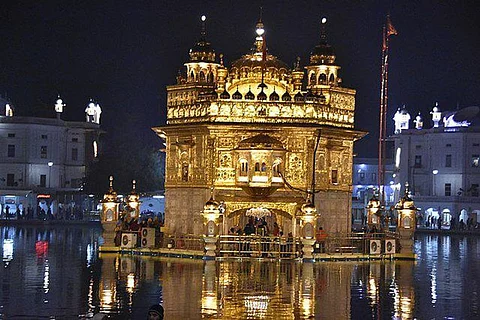
- Home
- न्यूजग्राम
- NewsGram USA
- India
- World
- Politics
- Entertainment
- Culture
- Lifestyle
- Economy
- Sports
- Sp. Coverage
- Misc.
- NewsGram Exclusive
- Jobs / Internships

The 'Langar' at Amritsar's Golden Temple is the world's largest FREE community kitchen. The Golden Temple in Amritsar has been providing free food, also known as langar, since the time of Guru Nanak, the Sikh people's first guru, who began the practice in 1481.
Where did it all start from?
When Guru Nanak Dev Ji was 12 years old, his father, a well-known merchant in his village, is said to have given him 20 rupees and asked him to do a trade. He evidently needed youthful Guru Nanak to become familiar with the business venture. However, rather than making a material trade, the Guru used the money to buy food to feed a huge number of saints who had been starving for weeks. When his father questioned him about business, he responded that he had performed a 'Sacha Sauda' which translates to True Business ('Sacha'-True, 'Sauda'-Business). Gurdwara 'Sri Sacha Sauda Sahib' was built on the site where Guru Nanak Dev served the needy.
Follow NewsGram on Twitter to stay updated about the World news.
The Guru Granth Sahib, the sacred book that is kept in all the gurudwaras, includes such significant lessons of the Gurus and is revered by the Sikhs. By learning from Guru's teachings and acts every day, they feed people of all faiths and denominations who come to their doors.
Meal is being prepared by volunteers. Wikimedia Commons
Shri Harmandir Sahib is the holiest pilgrimage site in Sikhism. This Gurudwara operates one of the largest kitchens in the world. They feed approximately 1 lakh people daily, 24 hours a day, seven days per week for free. In accordance with Sikhism's principles, all boundaries of faith, race, and ethnic background are annihilated as guests/visitors share food as equals, seated in a row on the ground. People are treated with affection and gratitude, and they are served till they are satisfied. This is what makes it the world's largest communal kitchen.
Best of Langar, it's run totally by benevolent volunteers who work nonstop to dole out the food. Since the gurudwara has a limited workforce, volunteers do most of the job here. From peeling to chopping to cooking, and serving thousands of people. Young and enthusiastic volunteers scurry back and forth, ladling hot meals into every platter. When people begin to leave, more volunteers rush in to help transport the dishes to the cleaning room. Another group of volunteers starts to wash them. Others clean the kitchen and langar spaces. Hundreds of volunteers are required to keep the gurudwara's kitchens operating 24 hours a day.
A group of volunteers helping with daily food preparation for Langar at the Golden Temple. Wikimedia Commons
ALSO READ: Sanskrit: The Deva-Vani
Sikhism underlines the significance of Seva (service), as a course to nullifying pride and discovering harmony. Taking a gander at the placated appearances of the sevadars (volunteers), that unquestionably appears to be valid.
The core of the Sikh religion is service to the community. Last year the Gurudwara Bangla Sahib in Delhi choose to give medical treatment to individuals who can't bear the hospital expenses. In the midst of a pandemic, this news came as a gift and blessing. "Naam Japo" (meditation on God's different names), "Kirat Karo" (earn a life that is genuine, pure, and committed), "Vand Chhako" (share whatever you have). These three principles, mainstays of Sikhism are the motivation behind why Gurudwaras prioritize essential activities like serving those in need.
By: Khushi Bisht
